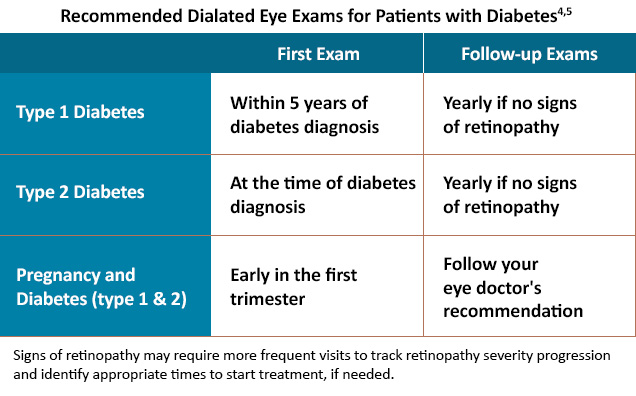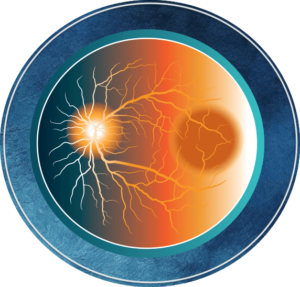Living With Diabetic Retinopathy
Meet Marcos, who explains his experience with anti-VEGF injections for DR
It is possible to have diabetic retinopathy for a long time without noticing symptoms until significant damage has occurred. Symptoms of diabetic retinopathy may occur in one or both eyes and include1-3:
- Blurred or double vision
- Difficulty reading
- The appearance of dark spots (commonly called "floaters"), shadows, or streaks in vision
- Difficulty with vision at night (example: night driving)
- Difficulty with low light situations (example: reading a menu in a dimly lit restaurant)
- Eye pain or pressure
- Faded color vision

Regular dilated eye exams in patients with diabetes help identify and prevent diabetic eye disease from progressing to the level of sight-threatening retinopathy.6
The best way to detect diabetic retinopathy is through a dialed eye exam, in which medicated drops allow the pupil to open wider for a better view inside the eye.6 Suspicion for retinopathy may be increased when high-risk features for retinopathy are present, including a high hemoglobin A1c [HbA1c], long history of diabetes, type 1 diabetes, uncontrolled high blood pressure, untreated sleep apnea, clinical depression, and presence of other diabetes complications.6
Eye care professionals who can perform dilated eye exams include optometrists and ophthalmologists; however, if retinopathy is present, prompt referral to an ophthalmologist, and when more severe retinopathy is present, a retina specialist is recommended.5, 6 Comprehensive evaluation includes a dilated eye exam and possible imaging of the layers of the retina and its blood vessels with optical coherence tomography (OCT) and fluorescein angiography (FA), helping detect fluid leakage and vessel damage.1
Color photography of the back of the eye can also be used to detect retinopathy; however, in-person exams are still necessary to detect and monitor for worsening of retinopathy that may require treatment before vision loss begins.1, 5, 6
If you are looking for more information on the symptoms and treatments for Diabetic Retinopathy, check out our other Retinal Disease resources.
References
- American Society of Retina Specialists (ASRS). Diabetic retinopathy. https://www.asrs.org/patients/retinal-diseases/3/diabetic-retinopathy. Accessed January 12, 2022.
- National Eye Institute. Diabetic retinopahy. NIH 2019. https://www.nei.nih.gov/learn-about-eye-health/eye-conditions-and-diseases/diabetic-retinopathy. Accessed January 12, 2022.
- Gregori NZ. What is diabetic retinopathy? American Academy of Ophthalmology. 2021. https://www.aao.org/eye-health/diseases/what-is-diabetic-retinopathy. Accessed January 12, 2022
- Flaxel CJ, Adelman RA, Bailey ST, et al. Diabetic Retinopathy Preferred Practice Pattern. Ophthalmology. 2020;127(1):PP66-PP145.
- Solomon SD, Chew E, Duh EJ, et al. Diabetic retinopathy: a position statement by the American
Diabetes Association. Diabetes Care. 2017;40(3):412-418. - Chous AP. Take charge of diabetic care. 2015. https://www.reviewofoptometry.com/article/take-charge-of-diabetic-care.


























